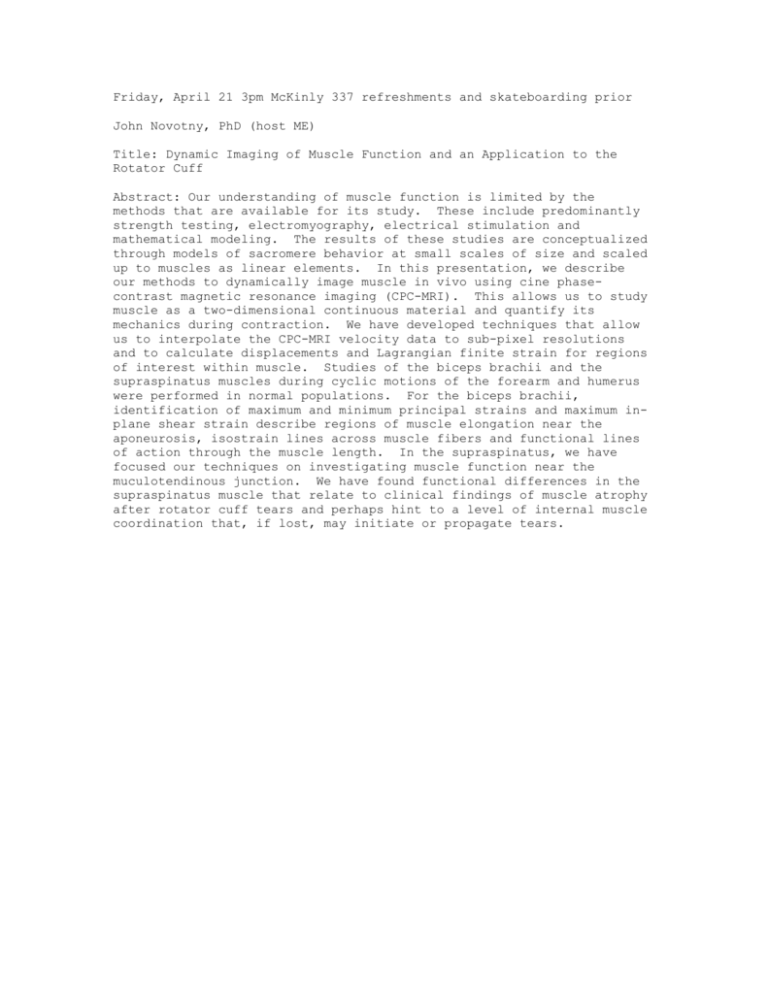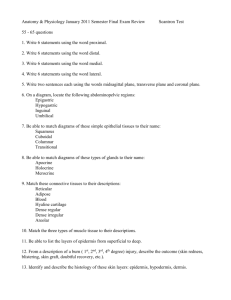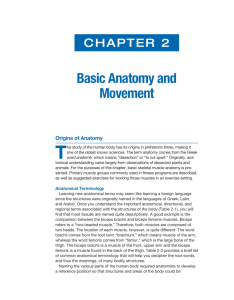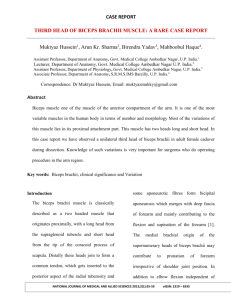Abstract 4_21
advertisement

Friday, April 21 3pm McKinly 337 refreshments and skateboarding prior John Novotny, PhD (host ME) Title: Dynamic Imaging of Muscle Function and an Application to the Rotator Cuff Abstract: Our understanding of muscle function is limited by the methods that are available for its study. These include predominantly strength testing, electromyography, electrical stimulation and mathematical modeling. The results of these studies are conceptualized through models of sacromere behavior at small scales of size and scaled up to muscles as linear elements. In this presentation, we describe our methods to dynamically image muscle in vivo using cine phasecontrast magnetic resonance imaging (CPC-MRI). This allows us to study muscle as a two-dimensional continuous material and quantify its mechanics during contraction. We have developed techniques that allow us to interpolate the CPC-MRI velocity data to sub-pixel resolutions and to calculate displacements and Lagrangian finite strain for regions of interest within muscle. Studies of the biceps brachii and the supraspinatus muscles during cyclic motions of the forearm and humerus were performed in normal populations. For the biceps brachii, identification of maximum and minimum principal strains and maximum inplane shear strain describe regions of muscle elongation near the aponeurosis, isostrain lines across muscle fibers and functional lines of action through the muscle length. In the supraspinatus, we have focused our techniques on investigating muscle function near the muculotendinous junction. We have found functional differences in the supraspinatus muscle that relate to clinical findings of muscle atrophy after rotator cuff tears and perhaps hint to a level of internal muscle coordination that, if lost, may initiate or propagate tears.











